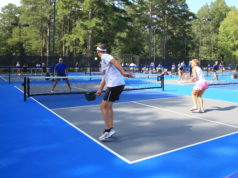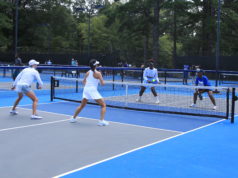By Melissa Baudo Marchetti, PT, DPT, SCS, MTC
The best-kept secret to maximizing your performance and keeping you active is simple: “Recover better.” The use of a simple piece of foam can help you optimize recovery, which is ideal for tennis players of all levels and ages.
Why foam rolling? Tennis may lead to increased tension/stiffness in your muscles and joints, which can alter joint motion and lead to poor movement patterns, a faster rate of fatigue, and injury. Self-massage exercises (self-myofascial release) on this simple piece of foam can immediately reduce soft-tissue tension and speed up the recovery process.
Each muscle resembles a rubber band; the farther you stretch it, the farther it will launch when you let it go. If you can increase the elasticity in the muscle by improving your flexibility, the result will be increased power and improved performance.
The foam roller is one of the most effective all-around, self-maintenance tools you will find, as it releases chronic muscular tension and pain (caused by playing tennis). It is simple to use; your own body weight massages away restrictions to normal soft-tissue extensibility.
Foam rolling:
- prevents joint stiffness and possibly reduces injury risk;
- increases flexibility and joint range of motion and function;
- enhances the recovery process; and
- is portable, lightweight and easy to travel with.
Whatever your athletic level or age, foam rolling should be an integral part of your daily routine. It is one of the easiest and most inexpensive ways to improve recovery, alleviate aches and pains, and improve flexibility. Use the roller directly after tennis or workout (prior to your cool-down stretching) and remember that areas that hurt need more attention.
A quicker recovery can help keep you active and translates to a better performance the next time you play.
Dr. Baudo Marchetti is an instructor at Emory University and a board-certified sports clinical specialist at One on One Physical Therapy, a multidisciplinary private practice in Atlanta. She also worked five years as a sports physiotherapist for the WTA Tour. Learn more by visiting onetherapy.com or email melissa@onetherapy.com.




